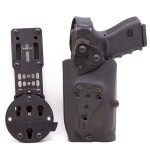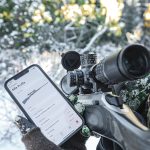All You Need To Know About the 25 ACP
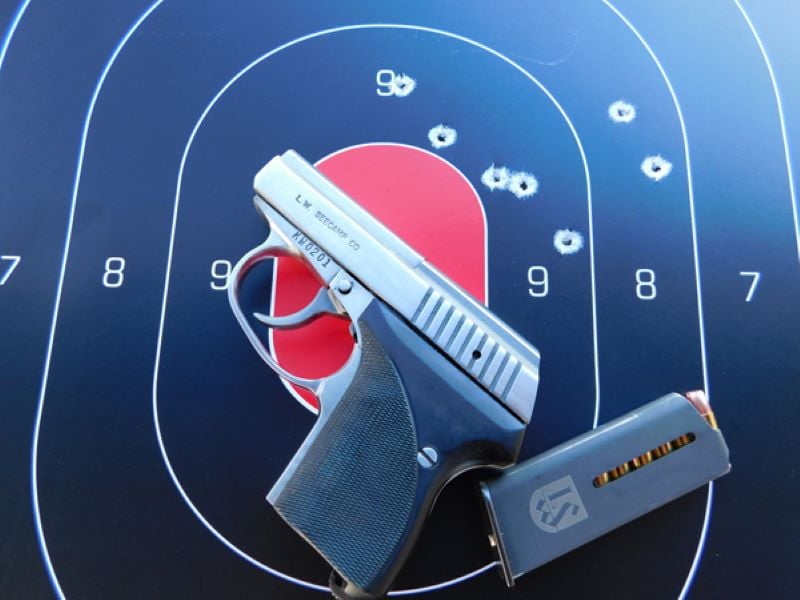
The 25 ACP round has been used in self-defense for over 100 years. Although considered underpowered today, the 25 is still a useful tool. It’s also a historic footnote that paved the way for the modern pocket pistol we now take for granted. Follow along as we explore both the history and ballistics of a small round that is anything but diminutive.
What Came Before
In my time rubbing elbows with fellow concealed carriers, I have often asked what round they consider to be the bare minimum in terms of ballistic power. While we have to admit that all pistols are underpowered compared to a good rifle or shotgun, some pistol rounds are better than others. Many prefer to carry a mid-size or subcompact pistol chambered in 9mm Luger, while a pocket pistol chambered in 380 ACP will suffice if the wardrobe dictates it. The 380 ACP is moderately powered, pushing a 95-grain bullet at about 900 feet per second out of a typical pocket pistol like the Ruger LCP. A pocket pistol chambered in 25 ACP can get a 50-grain bullet out of the tube at 750 feet per second.
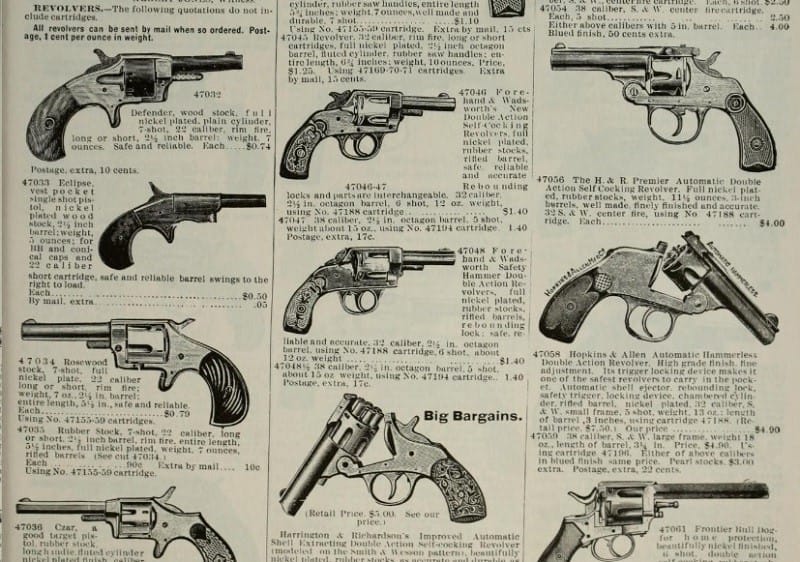
In the context of modern concealed carry attitudes, the 25 ACP stinks ballistically. But if the round is so terrible, why was it introduced in the first place?
The long and short of it is that firearms even less powerful than the 25 were common for concealed carry. Although big brands like Colt, Smith & Wesson, and Webley did well in sales of large .44 and .45 caliber pistols for martial and police service, these companies and dozens of others, both known and obscure, sold pocket pistols like hotcakes to a civilian market that had to contend with ordinances that prohibited the open carry of firearms.
Ease of carry and the ability to get a jump on an opponent outweighed power. The Remington Model 95 derringer chambered in the dinky .41 Short was a perennial favorite, as was a smattering of revolvers chambered in 22 Short and 32 S&W like the Colt Open Top Pocket and Iver Johnson Safety Automatic. In Europe, small revolvers like the Velo Dog weren’t uncommon in a coat pocket.

When John Browning created the 25 ACP and designed his FN Model 1905 pistol around it, he was out to build a better pocket pistol. The Model 1905 was a small, blowback-operated semi-automatic pistol that could go into a gentleman’s vest pocket. The 25 ACP cartridge is centerfire and more powerful than the 22 Short. The 1905 held more rounds than its contemporaries, like the 5.7 Velodog, and could be fired more quickly than the typical derringer.
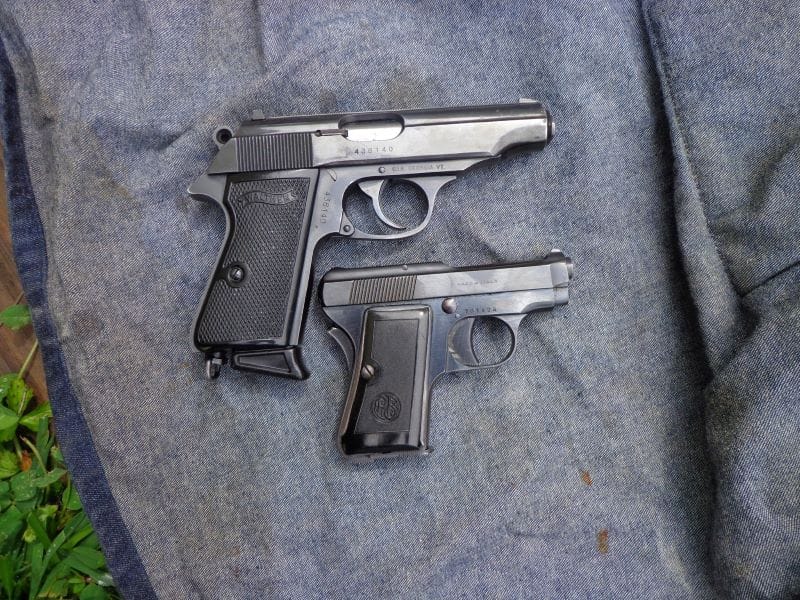
The Rise and Fall of the 25 ACP
After its debut in 1905, the 25 ACP was more immediately popular in Europe than in the United States, largely in part due to the World Wars. Although never designed for a martial role, pistols like the FN 1905, Mauser 1914, and the Beretta 418 saw use as both private purchases and official issuance to those in non-combat roles. It is little wonder that when Ian Fleming tapped into his past as an intelligence officer during the Second World War to create the martini-guzzling super spy James Bond, the character was initially armed with a Beretta 418 in 25 ACP.
The United State Army issued some Colt Vest Pockets (Colt’s version of the FN 1905) during the Second World War, but the reception of the 25 ACP in the American market had a slower burn. Although guns like the Colt Vest Pocket make for a classic hideout gun of the Prohibition era, small-framed revolvers chambered for .32 S&W Long and .38 Special were far more popular. But the 25 ACP’s acceptance picked up after 1945. Returning GIs came home with plenty of captured handguns. Large firms like Browning, and Beretta sought the American market, as did smaller consortiums like Astra and Tanfoglio.
In the decades since the end of the war, if you wanted a pocket pistol there were two viable options: opt for a small-frame snub-nose revolver like the Smith & Wesson Chief’s Special or the Colt Detective Special or run a 25 ACP pistol like the Beretta 950 or the Baby Browning. If you didn’t have as much cash to spare for either, an Astra Cub or something similar would suffice.
Unfortunately, the choices grew worse before better. The Gun Control Act of 1968 regulated the importation of foreign handguns by subjecting the models in question to a point system that determined whether a handgun had a sporting use. The 1960s was not a decade of universal bliss and the GCA was championed as an effort to limit the number of small handguns on the street. Manufacturers responded in kind. The grip frame of the Walther PPK was extended to meet import requirements. Browning successfully licensed their design through PSA. Beretta chose to construct a manufacturing facility in the United States. Others, like Astra, pulled out of the market entirely.
In response to the drought, American firms filled the void. Bauer produced unlicensed, though high-quality, copies of the Baby Browning. Seecamp created the LWS 25, a double-action-only pistol designed for instinctive point shooting. Others like Bryco, Jennings, and Raven produced inexpensive 25 ACPs that lacked the refinement and build quality of their European counterparts.
In attempting to disarm criminals of their cheap, concealable Saturday-night-specials, the GCA ultimately created more of them to the benefit of the criminal and the detriment of law-abiding citizens in need of protection. In 2003, Kel-Tec introduced the polymer-framed P3AT, an eleven-ounce double-action pocket pistol chambered in 380 ACP. The age of the modern pocket pistol had begun and by then, the 25 ACP was synonymous with criminality and junk.
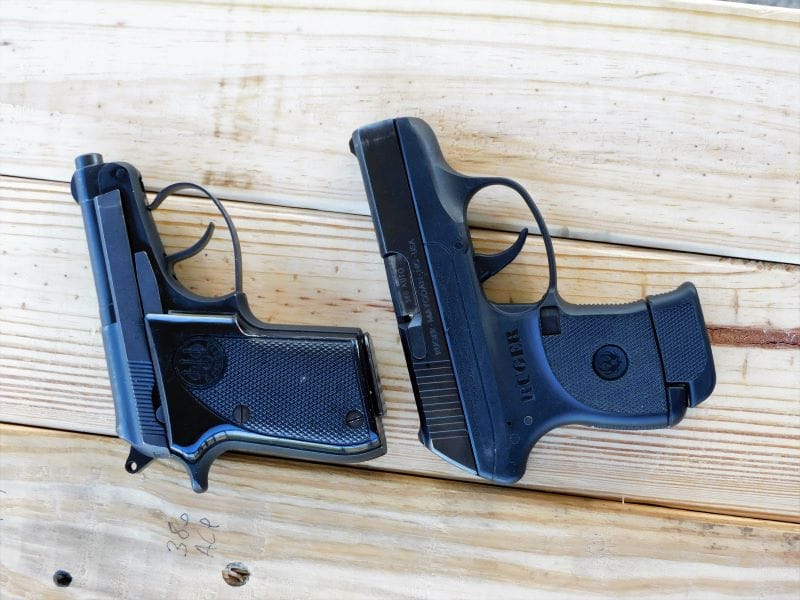
The 25 ACP Today
There are entire sections of gun store counters nationwide filled with small-framed 380 ACP pistols designed for pocket carry and priced to sell—and they do sell! By all metrics, guns like the Ruger LCP and the Smith & Wesson Bodyguard 380, are just as light as the 25 ACP pistols of old and pack an objectively bigger punch.
Likewise, the 22 Long Rifle cartridge has grown in capability. This rimfire round had been around since the end of the 19th century, but in the 1980s, compact autoloading handguns like the Beretta Bobcat were becoming more common. Likewise, reliable, high-velocity loads like the CCI Mini-Mag and Stinger served to mitigate some of the issues associated with rimfire rounds. Despite all of it, the 25 ACP has yet to die.
Some pistols were made in such huge numbers that the demand for the ammunition persists. Several manufacturers still produce 32 S&W for the millions of small break-top revolvers that were around when the 25 ACP came on the scene. Likewise, millions of 25 ACP pistols were made, and it appears that the people who have them are using them for serious work.
Although not nearly as cheap or plentiful as the 22 Long Rifle and the 380 ACP, several foreign and domestic manufacturers load both full metal jacket as well as defensive hollow point 25 ACP ammunition. Among the latter include known lines like the Hornady Critical Defense, Hornady XTP, and Speer Gold Dot. The ammunition situation mirrors firearm availability. There are many 25 ACP handguns to choose from, but most of them are decades old. Unlike pistols chambered in those other calibers, it can be tricky to find a new handgun in this chambering. Currently, Beretta, PSA, Seecamp, Phoenix Arms, and North American Arms offer a 25 ACP pistol.
Compared to a true service cartridge, the 22 LR, 25 ACP, and 380 ACP fall quite short in the ballistics department. All of these fall low on the power and handling spectrum, but the differences between them are more than academic.
The 22 Long Rifle shooter has the benefit of cheap, practice ammunition and plenty of handguns to choose from. Some experts have stated that the 22 LR is more powerful than the 25 ACP. That is technically true, but effectively false.
Most 22 LR ammunition is designed for a rifle barrel and is chronographed out of a rifle-length test barrel from the factory to give an advertised velocity. The CCI Stinger, for instance, has an advertised velocity of 1640 feet per second. Out of a pocket pistol with a much shorter barrel like a Beretta 21A, that same round will clock in just north of 1000 feet per second. This is still impressive compared to a 25 ACP 50 grain load traveling at 750 feet per second. But you are getting that velocity with a lighter 32-grain bullet that lacks the sectional density of the jacketed 25 load.
In this caliber, 50-grain hardball is the winner. A comparable solid 40-grain load like the CCI Mini Mag will have a similar sectional density as that load, but velocity is knocked down to 850.

In a block of 10% Clear Ballistics gelatin fronted by four layers of denim, the 25 ACP hardball load can reach 12 inches of penetration. The CCI Mini Mag 40 grain load reaches to the 10-inch mark. Similar tests using 2x4s as penetration mediums confirm that the 25 retains a marginal advantage in the pocket pistol arena over the 22 LR. And despite the advances in 22 LR ammunition, the round is still a rimfire. It uses a heeled bullet that tends to collect debris and the rim priming can still be faulty. Even with the best ammunition, dud rounds still happen.
The case against the 25 ACP is more compelling when compared to the 380 ACP. Defensive 380 loads are hit-and-miss when it comes to penetration and hollow point expansion but there are a few that work quite well. With a full-metal-jacket or Buffalo Bore’s 60-grain hard-cast load, the 25 ACP can achieve comparable penetration but there will not be any expansion.
On the whole, the .380 is going to poke bigger and deeper holes in whatever you are shooting, and it will do it out of a pocket platform. The cost of the .380 is controllability. Although less powerful than a service caliber like 9mm Luger, the .380 ACP can be snappy when touched off in a lightweight pistol. It takes more mental and physical preparation to hold the pistol on target for quick follow-up shots. While you trade off ballistic performance in most cases with the 25 ACP, what you get in exchange is an even smaller handgun that is much easier to shoot for the end user.
Jeff Cooper once advised us to “carry a 25 if it makes you feel better, but never load it. If you load it, you may shoot somebody. And if he finds out about it, he may be very angry with you.” But how do we square the history and usage of the 25 ACP when he also opined that the No. 1 rule of a gunfight is to have a gun? By today’s standards, the 25 ACP isn’t much and there are scant few new pistols chambered for it. The world has moved on and bigger is better, right? Well, not always. And in those situations where a bigger gun can be counterproductive, a properly loaded 25 ACP pistol not only beats having no gun, but is, and has been, a proven and useful tool.

